Farrington’s Tree Tribute Project Is AR Ode to Natural World
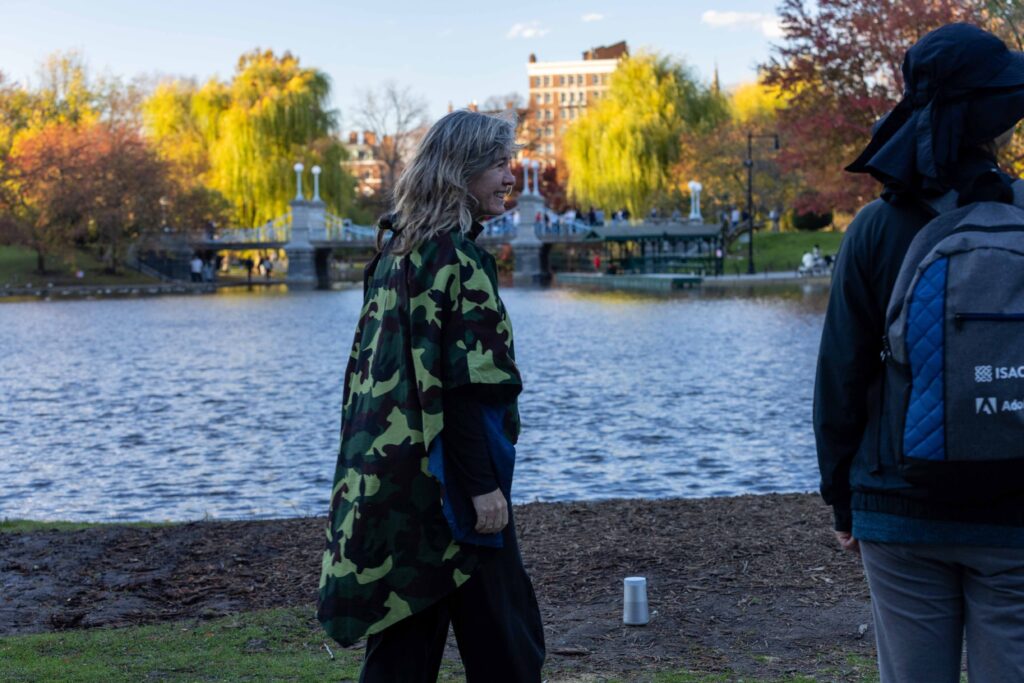
The Boston Public Garden’s hundreds of trees inspired affiliated faculty member Kate Farrington to create an augmented reality public art project encouraging people to write odes to the Garden’s flora,
“My ode ended with a poem about my chosen tree, the littleleaf linden, an extraordinary tree on the edge of the pond that almost extends directly over the water, with most of its roots exposed,” said Zander Colman ’25. “I hadn’t written a poem since middle school, but writing this one in this environment, along with my friends who also wrote odes, was very enjoyable.”
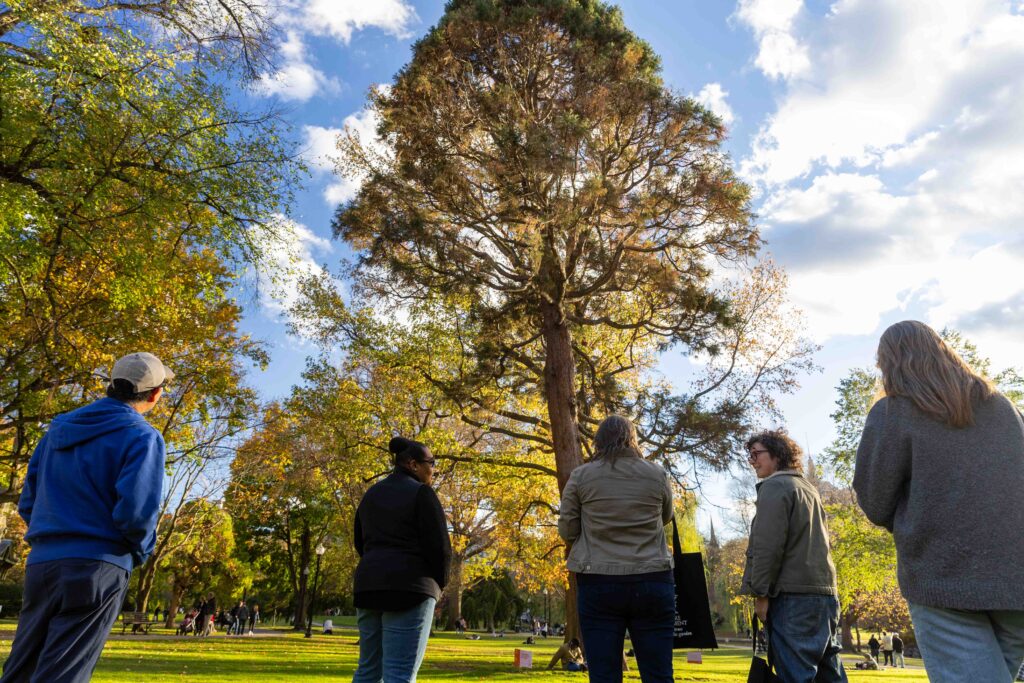
Colman, a former student of Farrington’s, joined the project, Future Monument to the Trees of the Public Garden, as a creative media lead, where he filmed footage of the trees, documented the walking tours, and assisted in workshops leading up to the project’s public launch.
Farrington facilitated tours of the project during Veterans Day weekend. Farrington led groups on hour-long tours throughout the Public Garden to see 14 different trees. She carried two speakers, and at each tree, the group stopped and listened to a recorded ode. The odes, written by Farrington’s students, friends, and fellow artists, were like heartfelt letters to the trees; the authors wrote about their relationship to nature and explored their own stories and feelings through their connection to their chosen species.
The project used the Hoverlay app to include augmented reality. By scanning QR codes posted in front of each tree (now only available online), viewers were able to see immersive photos and videos of the different trees while walking around the garden. They could also play the odes in real time.
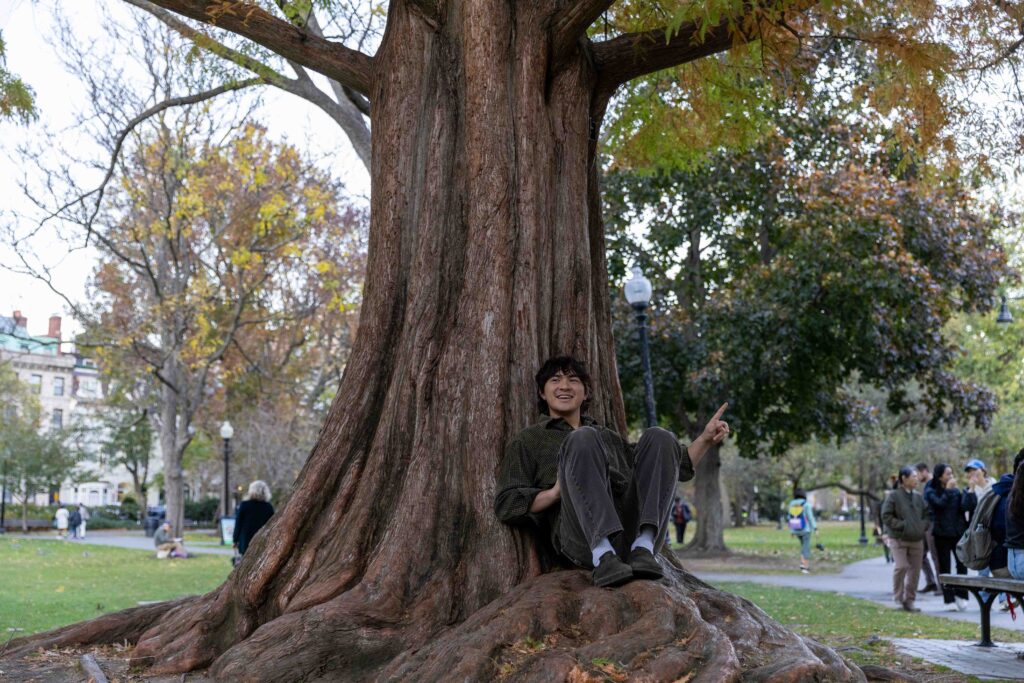
“When I first wrote the ode in class last year, it’s fair to say I didn’t expect it to be played three times a day over Veterans Day weekend in the Boston Public Garden,” Coleman said. “Hearing people react so positively was very rewarding, especially because this work is so different from what I typically create.”
Farrington’s project is part of the City of Boston Office of Arts and Culture’s multi-year “Un-monument” program. The program aims to “…enable artists to promote a far more engaged, reflective, creative, and active relationship with the city’s landscape and built environment.”
The program is funded by a $3 million grant from the Mellon Foundation and consists of two public calls for artists to submit ideas for a temporary monument. Farrington’s work was part of the first public call, and the second public call is open through January 2025.
A recent Emerson Contemporary gallery exhibit, Regarding Monuments: Visualizing Hidden Histories, was also part of the city’s “Un-monument” program. Distinguished Curator-in-Residence Leonie Bradbury, who leads Emerson Temporary, spoke about the program and Farrington’s project.
“The bigger idea behind it is looking at the memorial landscape in Boston, who should be honored, who should be remembered, and who decides?” said Leonie Bradbury, Distinguished Curator-in-Residence at Emerson. “This is really a creative exercise to reimagine how we can create memories of this place.”
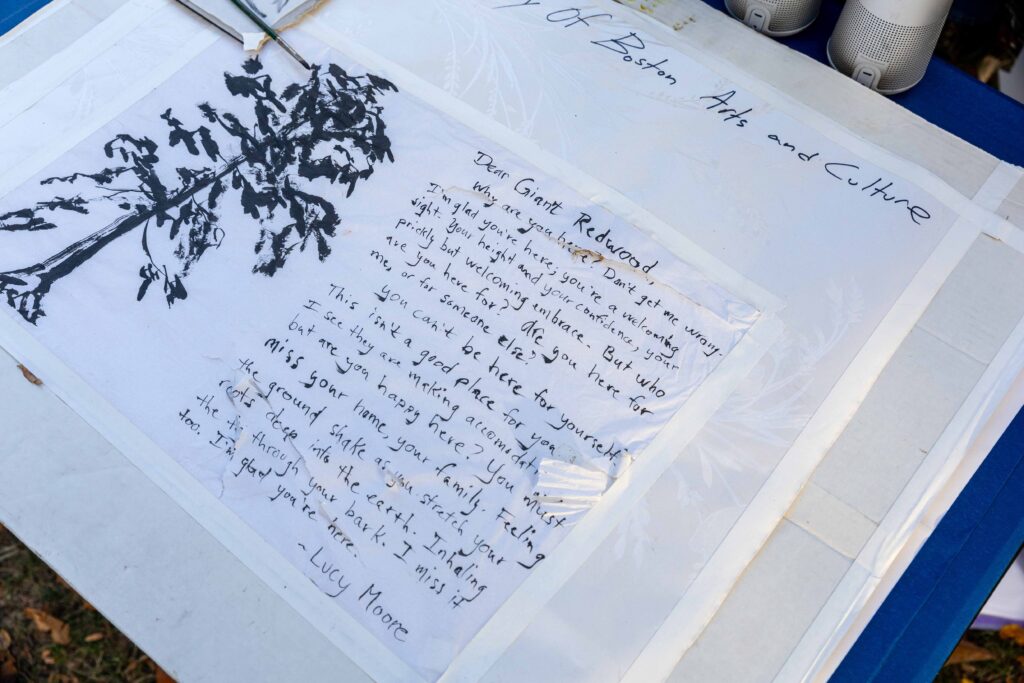
Students Planted Seed for Project
During a prior semester, Farrington led her Environmental Ethics course on a “woods walk” in the Garden, where they wrote objective, aesthetic, and ethical odes to different trees. The “shared authorship” of the activity inspired her to create Future Monuments to Trees.
“We are writing the city,” Farrington said. “It makes the future. The idea is that this could grow and grow and grow.”
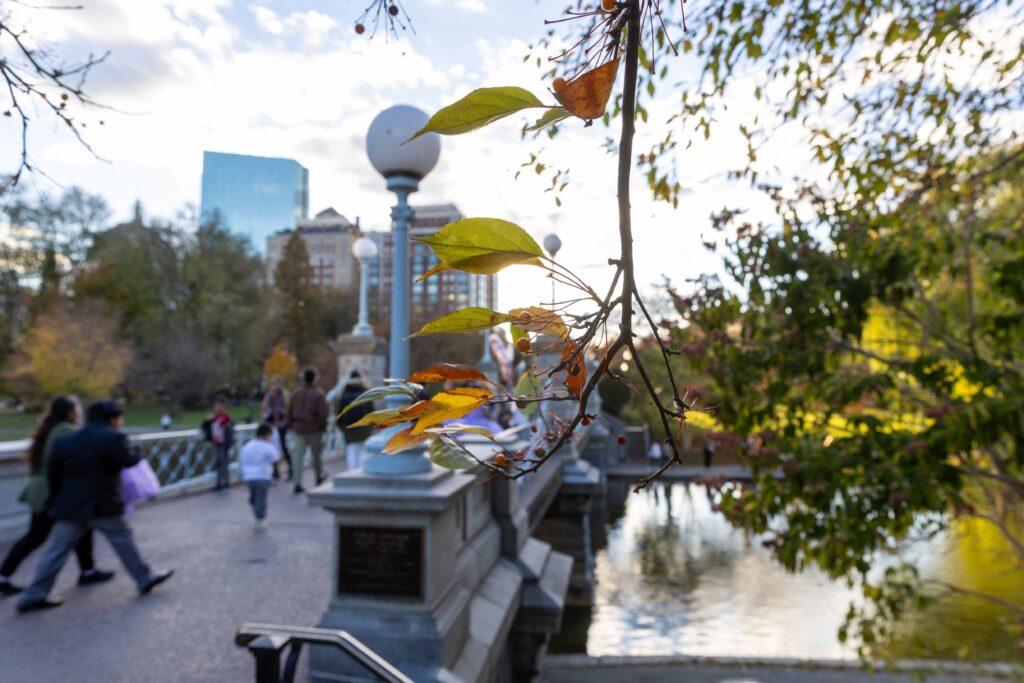
Jacob Armant ’26 also joined the creative team as a graphic designer after taking Farrington’s Environmental Ethics course. He stayed in touch with Farrington after completing the class, attended her workshops, and ended up writing his own ode to an American elm.
“I like how meditative [the tour] was,” Armant said. “You have something to think about, you’re hearing stories from other people, and it’s a space where you can reflect on your own experiences with nature. [Farrington] was guiding me through the tour, but I was guiding myself through moments of meditation.”
Reflecting on the nine tours she facilitated over the long weekend, Farrington said the project was a success.
“Every single tour was special,” Farrington said. “I feel amazing to have the support of the city to do a public art project. It’s about opening space to create new things to happen, that’s what art does.”
Categories